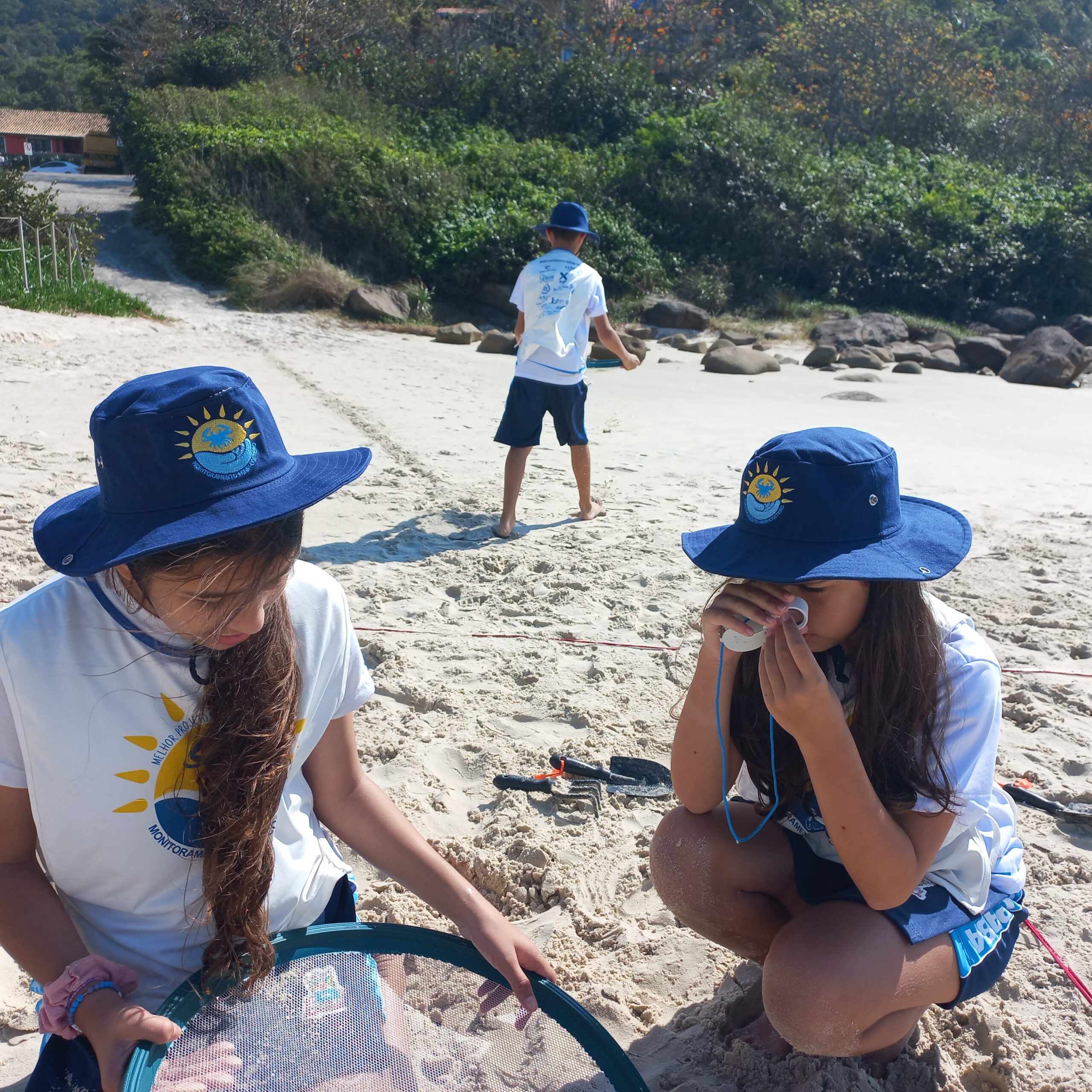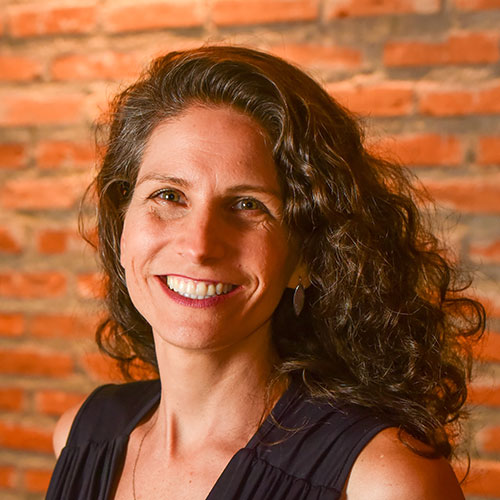Monitoramento Mirim Costeiro prepares children to be guardians of the ocean
Citizen research certified as social technology alerts parents and children to the impact of ocean pollution


Monitoramento Mirim Costeiro program was born from a dream by oceanographer Caroline Schio. She was graduating from college when she started thinking about how she could use her knowledge to contribute to society.
Carol wanted something connected to people’s daily lives that could be applied in practice, so she created a pioneering citizen research methodology for fourth and fifth-grade schoolchildren.
“She was always concerned about trying to pass on all the knowledge she had access to at the university, because she believed that each person’s actions could make a difference,” says Cris Guimarães, president of the project that was founded in 2018 to improve the program (MMC).
The oceanic culture work began in Garopaba, a municipality with around 40 thousand inhabitants on the south coast of Santa Catarina. Carol, together with two other local friends, a geologist and a biologist, implemented the pilot project in 2012, in nine municipal schools. Today, the program reaches the entire municipal network of Garopaba, with 12 schools in total.
“We monitor the seven beaches of Garopaba. Each school monitors the beach closest to its neighborhood, precisely so that children can gain empowerment over their territory, to understand the importance of taking care of the environment they enjoy”, points out Cris.
Social Technology
Over the ten years of operation, around 4,600 children became child monitors through the program, which was certified by the Fundação Banco do Brasil de Tecnologias Sociais, in 2017, and became the object of study in Carol’s doctoral research, at the University of Lisbon (ULisboa), in Portugal.
With certification, the methodology began to be replicated with support and security in other municipalities. In addition to Garopaba, for example, the program was implemented in Florianópolis (SC), Ubatuba (SP) and Portugal, transforming children into true environmental guardians.
Training children into child monitors goes through a process: first, children visit an exhibition about the program, with videos and samples from the marine collection. There they have access to research tools, observe the sand with a mini microscope and look at marine animals. It is the first contact with the program.
“Then, at other meetings, we go with them to the beach to do the research. In class, students calculate the indicators that were found on each beach. Finally, graphs are generated with the results of the research”, explains Cris.
Meetings vary according to the number of students and funding. In Garopaba, where the program was founded, 22 classes participated in the project throughout the year, with an average of four meetings per class.
The results are displayed on the beaches, where they receive a sign with the group’s photo and research data. At the end, a virtual meeting is also held for children to exchange experiences, including participants from other Brazilian municipalities and abroad where the project is present.

Citizen research
To carry out the research, students are divided into groups. Armed with tools, such as sieves, magnifying glasses, tape measures, mini-microscopes and shovels, the groups are in charge of a research square on the beach, called a transect. “That’s why it’s important to do it with children in the fourth and fifth-grade, because they need to know mathematics, calculate areas”, says Cris.
The research involves counting natural objects and also waste, such as cigarette butts, bottle caps and microplastics. What is natural is on the beach. The rest is collected and disposed of in the correct trash. Everything is noted down in a spreadsheet, which will be used to prepare the indicators.
“The research area is small, but then, at the end of the year, when we calculate the indicators, we extend the beach with that result to get an idea of what waste there is and what natural objects there are.”
At the beach, children also observe the tide and learn the geography of the place: “they understand why there are waves or not there, why the sand is coarser or finer, what the weather conditions are, whether there is sun, whether it is cloudy, the types of clouds, in short, make a complete study of that environment”, explains Cris.


Young guardians of the ocean
Cris Guimarães, president of IMMC, says that the amount of microplastic found on beaches has increased dramatically in recent years. Action research, therefore, has the function of awakening children to the need to care for the environment, especially waters and oceans.
“Sometimes we arrive at the beach and the sand is smooth, so we think it’s super clean. But just start moving and we see a lot of microplastics, because plastic doesn’t decompose, it just breaks down, and now we live with nano plastic, present in sea salt, fish, and has even been identified in human blood, in the placenta, and recently even in the heart and lungs”, he warns.
She notes that the microplastic found on the beach is the result of inadequate disposal of products in places very far away: “each package that was left on the curb of an inland city and entered the pipeline ends up in the rivers and ends up in the ocean. What we see on the beach is a result of this.”
Aware children, alert parents
According to the president of MMC, cigarette butts, plastic and microplastic are the waste most found on beaches by program members. She pays attention to the impact of these materials:
“We have stomach samples from turtles and seabirds that prove that these animals are ingesting plastic. And the plastic in the ocean isn’t from now, it’s from years ago. Research shows that there are pieces of plastic from the 1970s. This is very worrying! The UN says that by 2050, if nothing is done, there will be more plastic than fish in the ocean…”
In this way, she defends the importance of thinking globally and acting locally: “We have trained almost five thousand child monitors since 2012. By having contact with this topic, the children realized the importance of conserving the environment. And they have incredible power to influence parents”, says Cris.
Instituto Monitoramento Mirim Costeiro
To implement its projects, MMC relies on local supporters, agreements and notices. Currently, MMC, in addition to the training program for coastal child monitors, also carries out beach cleaning activities on commemorative dates and other socio-environmental education activities, such as eco-educational workshops and scientific expeditions.
The most recent novelty is using drones in action research, attracting even more attention from children and young people to the topic. The organization is open to anyone who wants to replicate the MMC program methodology.
To implement the program, it is necessary to establish partnerships with public or private schools and raise funding from companies or public authorities to maintain the action research structure. The technicians or teachers who will conduct the action research also need to undergo IMMC training, which can be done in person or virtually.


Want to support this cause?
MMC receives donations and mobilizes volunteer work in actions such as World Ocean Day, World River and Beach Cleaning Day and other Clean Beach actions.
To find out more information about BMI, visit the website or follow social media on Instagram and Facebook.


